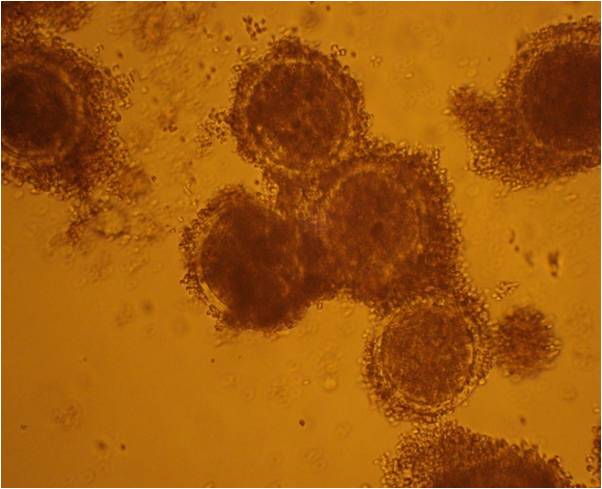One of the assisted reproductive technologies that are now popular in tackling infertility problems is in-vitro fertilization (IVF). IVF is a very profitable method because besides being able to overcome infertility problems, this method can produce embryos of high quality and in large numbers. However, the drawbacks of this technology are poor oocyte quality and limited oocyte sources for in vitro embryo production.
An alternative breakthrough technology to produce embryos can be done in vitro using the Intra-Cytoplasmic Sperm Injection (ICSI) method. The ICSI method is a method by inserting sperm directly into the ooplasm of the metaphase II oocyte using a microscopic injector needle. This method is mostly used on humans and animal models to increase the reproducibility and productivity of livestock. The advantage of IVF and ICSI embryos is that they can be frozen using the cryopreservation method. During the freezing process, all cell metabolism stops and then return to normal when the embryo is thawed again. Drastic temperature changes in the cryopreservation of embryos cause damage to blastomere cells, sometimes causing blastomeric cell apoptosis.
In the ICSI process, oocyte activation is one of the factors that influence the success of fertilization. The oocyte activation occurs due to a complex interaction triggered by the entry of spermatozoa into the oocyte. An early indicator of oocyte activation is characterized by repeated increases in the intracellular calcium concentrations. The increase in intracellular calcium occurs due to a complex interaction triggered by the entry of spermatozoa cells into the oocyte during the fertilization process.
During the fertilization process, the endoplasmic reticulum inside the oocyte releases Ca2+ ions as important triggers for development into embryos. Increased levels of calcium ions (Ca2+) in the oocyte cytoplasm will initiate the formation of a pronucleus as a sign that the oocyte has been fertilized. The most important principle of embryos cryopreservation is the removal of water from the cells (dehydration) before intracellular freezing. If dehydration does not occur, large ice crystals form in the cell and damage the cell. Reversely, if severe dehydration occurs the cell experiences membrane damage and dies.
Calcium is important for embryonic development. If there is damage to the cell membrane, the released calcium will not re-enter the cell quickly. The dynamics of calcium uptake in cells greatly affect the quality and viability of the embryo. As a second messenger, intracellular calcium signals are capable of decoding and integrating into both chemical and physical environments. These calcium signals control cell division, differentiation, migration, and cell death. Calcium through signal transduction plays a role in the oocytes into embryos transition through the fertilization process, and in the embryo formation.
This study aims to determine the embryo’s intracellular calcium profile and viability using the Intra Cytoplasmic Sperm Injection (ICSI) method among fresh embryo and embryo prior to vitrification produced. ICSI-produced embryos were divided into 2 groups, group T1 which was fresh embryos, and T2 which embryo with vitrification. The stages of this research included medium preparation, goat oocyte collection, in vitro maturation of Kacang goat oocytes, fertilization using the ICSI method. Both of them then observed the intracellular calcium profile. Examination of the Ca2+ intensity profile of fresh embryos and vitrified embryos per unit time (sec).
Measuring the intensity of Ca2+ using Confocal Laser Scanning Microscopy (CLSM) with time-lapse, taken at 3 points, namely point 1: edge, point 2: middle, and point 3: edge of the embryo sample. The fertilized embryos showed that the average calcium intensity of T1 was 334.62±8.60 and T2 was 408.2±13.67. The intensity of Ca2+ in embryos post vitrification is higher than that of in fresh embryos. The oscillation of Ca2+ in fresh embryos was in tune to the measurement point of 50 sec, while in embryos post vitrification the intensity from the 10th, 20th early sec and the 50th end interval were not consistent. It can be concluded that the intensity of Ca2+ in embryos post vitrification is higher than that of in fresh embryos. The dynamics of Ca2+ in frozen embryos experiencing changes in intensity indicate a change in embryo quality due to vitrification.
Author: Epy Muhammad Luqman
Detailed information from this research can be seen on this article on https://vetdergikafkas.org/uploads/pdf/pdf_KVFD_2857.pdf





